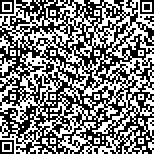| 摘要: |
| 本研究采集了分布于中国东海的前肛鳗(Dysomma anguillaris)、短尾蛇鳗(Ophichthus brevicaudatus)、艾氏蛇鳗(Ophichthus evermanni)、海鳗(Muraenesox cinereus)、黑尾吻鳗(Rhynchoconger ectenurus)、微鳍新鳗(Neenchelys parvipectoralis)、大头蚓鳗(Moringua macrocephalus)、梅氏美体鳗(Ariosoma meeki)和星康吉鳗(Conger myriaster)9种鳗鲡目(Anguilliformes)鱼类,采用PCR技术扩增了线粒体COI基因片段序列, 结合GenBank数据库中下载的5种鳗鲡目鱼类同源序列, 分析比较了序列组成和差异, 并以光海鳝(Muraena argus)和细点海鳝(Muraena augusti)为外群, 基于最大似然法构建了鳗鲡目中6科11属14种鱼类的系统发育树, 探讨了该类群鱼类的系统进化关系。结果显示:72条序列共检测到43种单倍型, 4种碱基含量分别为27.4%(T)、28.2%(C)、25.8%(A)、18.6%(G), 平均A+T含量(53.2%)高于G+C含量(46.8%), 表现出明显的碱基组成偏好性。基于K2P(Kimura 2-parameter)模型计算得出不同种间的平均遗传距离为0.218 8, 不同属间的平均遗传距离为0.225 0, 不同科间的平均遗传距离为0.232 7, 分类阶元越高, 遗传距离越大。系统进化树显示蛇鳗科物种都能够形成独立的分支, 并得到有效的区分, 而其他类群存在混杂现象。以上结果表明, 由于鳗鲡目鱼类种类多且分布广,线粒体COI基因只适用于较低分类阶元(如科内属间、属内种间)间的物种鉴定, 该类群鱼类系统发育关系还有待于结合多种DNA条形码进行深入探讨。 |
| 关键词: 鳗鲡目(Anguilliformes) COI基因 DNA条形码 遗传距离 系统发育 |
| DOI:10.11759/hykx20220607002 |
| 分类号:S931 |
| 基金项目:浙江省重点研发计划项目(2021C2047);舟山市科技计划项目(2022C41022);浙江省教育厅一般项目(专业学位研究生培养模式改革专项)(Y202148225) |
|
| DNA barcoding analysis of some Anguilliformes fishes in the East China Sea |
|
NING Zi-jun1, LIU Yu-ping1, GAO Tian-xiang1, JIANG Ri-jin2, YANG Tian-yan1
|
|
1.Fishery College, Zhejiang Ocean University, Zhoushan 316022, China;2.Zhejiang Marine Fisheries Research Institute, Zhoushan 316021, China
|
| Abstract: |
| In this study, the following nine Anguilliformes species were collected from the East China Sea: Dysomma anguillaris, Ophichthus brevicaudatus, O. evermanni, Muraenesox cinereus, Rhynchoconger ectenurus, Neenchelys parvipectoralis, Moringua macrocephalus, Ariosoma meeki,and Conger myriaster. The mitochondrial cytochrome c oxidase subunit 1 (COI) gene fragments were amplified by polymerase chain reaction and then sequenced. The homologous sequences of five Anguilliformes downloaded from the GenBank database were analyzed and compared. The maximum likelihood phylogenetic tree of 14 species, 11 genera, and 6 families in Anguilliformes was constructed with Muraena argus and Muraena augusti as outgroups. The results indicated that a total of 43 haplotypes were detected in 72 sequences, and the contents of the four types of bases were 27.4% (T), 28.2% (C), 25.8% (A), and 18.6% (G), respectively. The average content of A+T (53.2%) was higher than that of G+C (46.8%), suggesting an evident bias of the base composition. Based on the Kimura 2-parameter (K2P) model, the average genetic distances between the species, genera, and families were 0.218 8, 0.225 0, and 0.232 7, respectively, indicating that the higher the taxonomic order, the greater the genetic distance. The phylogenetic tree indicated that the Ophichthyidae species can form independent clades and be effectively distinguished. However, the clustering of other genera and families produced a mixed phenomenon. The results suggest that, because of the species diversity and wide distribution of Anguilliformes fishes, the mitochondrial COI gene may be more suitable for species identification and classification in the lower taxonomic category (such as being coordinal or congeneric), and the phylogenetic relationships of Anguilliformes species warrant further exploration in combination with multiple DNA barcodes. |
| Key words: Anguilliformes COI gene DNA barcoding genetic distance phylogeny |
